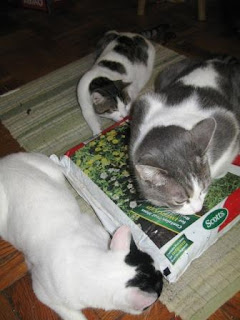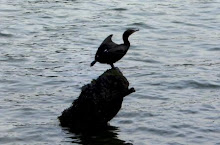Tuesday, May 31, 2011
Thor, F.K.A. God of Thunder
Sunday, May 15, 2011
Back To Square One
Up the hill I walked, fully determined to think strategically, to decide who I want to be when I grow up (this time) and what on earth I’m going to do with whoever she turns out to be. My job search has been sluggish from the start, for two reasons: First, the world has changed enormously since I last looked for a job, and I’ve been pulling myself up a learning curve. You’ve no idea how many webinars are out there on how to find a job these days, how much conflicting information and advice, how many websites you have to publish your entire life on – unless, of course, you’ve been looking for a job yourself since the economic downturn started turning. When I resigned last year, I had no idea what was going on out here! Second, since I haven’t yet grown up, I haven’t narrowed down what I want. That would require strategic thinking, not to mention commitment.
All of this planning of intended thought processes was done before I left home. Once I started walking, my mind did indeed clear. To nothingness. Well, that’s a start, is it not? Not winded but a little sweaty, I got to the Overlook in Forest Park. People played in every court, on every green, rode bicycles, walked arm in arm. Damp or not, it’s spring in New York, and we’re out in force in our parks. What is not out in force is the public bathroom. All doors barred. I determine to write an annoyed email to whomever is in charge of such matters once I circle back and stop in Starbucks to plan my future on paper.
But first I wandered through a well-to-do neighborhood, so my circle back to Starbucks was rather more elliptical, and when I arrived, all the indoor seats were taken. It’s spring, however, so the outdoor tables are in place. I got my soy chai latte, commandeered a metal table and chair, and angled myself so I could see my computer screen despite the weak sunshine.
And what did I do? Did I open up the document I had created with a list of companies to be researched? That would have been somewhat strategic. Alas, no. I went straight to the document with my notes on the new article I’m writing, and spent a few hours researching, taking notes, making tables…. Tactically valid. Strategically not.
Mind you, none of this entered my mind until I started the downhill trek home through the gathering dark. Pleased with the research (a bit more than was strictly necessary, but two articles back I was on my second revision before I realized I’d missed some important information by not asking one more question. Write and learn.), I knew I could write a quick first draft in the morning, and move onto other work. More tactical thinking.
So. Another weekend has passed since an old friend told me at my goddaughter’s wedding that I just had to grow up. Don’t be mad at him. Friends are supposed to tell friends the truth. This doesn’t mean I won’t catch a $7 movie on Tuesday and write about it! Tonight, though, if I think real hard about growing up in the 21st century, maybe in my dreams I’ll creatively visualize a grown-up, taller, thinner, smarter me in a new job. Instead of having my usual strange dreams about the old one….
~ Molly Matera, determined to turn off the computer and research inside my own mind.
Wednesday, May 11, 2011
The Unforgettable Cave of Forgotten Dreams
Monday, May 9, 2011
Spring Planting
Water and Whiskey for Elephants
- Camel, a roustabout who takes Jacob under his wing, played winningly by Jim Norton.
- The hateful Blackie (Scott MacDonald) who beats up and kills whoever August tells him to, while
- Earl (Ken Foree) protects August from all comers, including himself.
- Mark Povinelli plays Walter, an irascible animal wrangler with a Jack Russell who loves him and no one else.
- James Frain makes a brief but notable appearance as Rosie’s last caretaker.
Thursday, May 5, 2011
Happy Cinco de Mayo

With my niece’s wedding successfully concluded last weekend, this was my week for gardening. I didn’t get to it until yesterday, but since it rained a lot, I chose not to do wet raking. I find it inefficient. Today, however, is glorious, so out I went, foolishly ungloved, just to do a little bit of raking to start. Of course, that means raking up everything I should have raked in October and discovering all sorts of things underneath. Hunks of tree bark amid the ivy – what tree? Tiles, stones, pieces of plastic wrapping?? It was a rough winter on all of us, and the evergreens out back are hanging lower than ever as if the snow still weighed them down. Lots of pruning to do.
So, once I started, I raked up two big “outdoor trash” bags of leaves, twigs, branches, pinecones, vines, and whatnot. Today’s raking barely dented the back 20. That’s 20 feet by a good deal less than 20 feet, not acres. Day by day, little by little. While I was out there, I saw many dandelions, just as I had any other day the past two weeks walking along GCP. Big gorgeous dandelions.
When I was a child, I picked some dandelions for my godmother and presented them to her as if they were magnificent. Well, they were, and are, but at the time…. My godmother accepted them graciously, but later my mother told me they were weeds and that my godmother was allergic to them. Alas, so much for flower gathering.
Now, though, I look at all the dandelions and wonder how many dandelions it takes to make a pot of dandelion tea. I referred to my cousin Maggie’s blog, where she gives a recipe for dandelion wine. That’s my cousin for you. This recipe seems simple but requires patience, as it must ferment! http://albionmaggie.blogspot.com/2010/05/dandelion-wine-recipe.html
The answer to my original question is: To make tea you need the roots. Flowers are for salads and fritters and such like. While I felt my neighbors would not begrudge the picking of what they all consider just a weed marring their mostly bedraggled lawns, I am in the habit of reading thoroughly, and the web site on which I found a tea recipe warned the reader to be sure to pick flowers only where I could be sure no fertilizers had been used. Well. The only place I could be sure of that….. was not in Queens. So, I’ll just have some ordinary green tea, thank you. In a little bag. The lazy way for this city girl.
~ Molly Matera, signing off to luxuriate in store-bought green tea over a good book. And perhaps a dollop of brandy….
Tuesday, May 3, 2011
Alas, these umbrellas are not from Cherbourg
Potiche is a French term for trophy wife, which is what Catherine Deneuve plays in the first part of this film. She is Suzanne Pujol neé Michonneau. Her husband Robert (Fabrice Luchini) runs her late father’s umbrella business, her “dowry.” He is terse, insulting, and cheats constantly. Luchini is reliably slappable and just right for this role. Their married daughter Joelle (Judith Godrèche) is flip, disrespectful and unkind to her mother, adoring of her father. Jérémie Renier plays her son, appearing at least a decade too old for the role. He’s clearly gay from the get go, but no one seems to notice, including himself. Perhaps this is what the film is about? Well, no. Neither he nor his mother figure that out until the end when all the little ribbons have been tied up in expected fashion.
Really, most of the people in this film are just awful, except for Suzanne, whom it is hard to like because she’s a dishrag. And then the factory workers go on strike, take the obnoxious Robert hostage, he eventually suffers an attack of some sort, and Suzanne takes the reins of the business. She is a born leader, loves her workers as her father had before her, and she turns the business around. Everything’s lovely until her husband returns. All quite predictable.
Gérard Depardieu plays a business owner’s enemy, a political officeholder of the Communist Party. Over twenty years before, he and Suzanne, from diametrically opposed social classes, had a very brief fling – too brief to call an affair. Depardieu is even more disappointing than the film, his facial expressions plastered on, his line readings leaping from dull to over the top. He encourages Suzanne to run the factory in her husband’s absence, and clearly hopes for more.
Karin Viard is marvelous, sharp, witty, sad, and hopeful as Pujol’s secretary and long-time mistress. While one would consider the adulterous secretary and the wronged wife to be natural enemies, they work happily together at the factory and promise to continue later on. Suzanne gives dictation as they walk through a factory that now manufactures bright red umbrellas, which of course make us think of Cherbourg. Unfortunately, that’s not enough to make this charming.
The only part of this film that is not predictable is the dreadful music. When Suzanne wins an election at the end of the film, she sings. At home, her husband, her pregnant daughter and the Pujols' two grandchildren watch her on television. Depardieu listens to her rapturously. It’s saccharine and sophomoric.
Back in 1983, Pierre Barillet and Jean-Pierre Grédy wrote a TV movie called “Potiche.” Perhaps it worked then. This 2010 release was loosely based on that and is credited to Barillet, Grédy, and Ozon. It is possible that this film could have been witty in the 1980s, but not in the 21st century.
~ Molly Matera, signing off. Clearly not nostalgic for the 1970s or 1980s, I’m going to listen to some rock or blues or anything unlike the music in the film, thankful those days are long gone.










